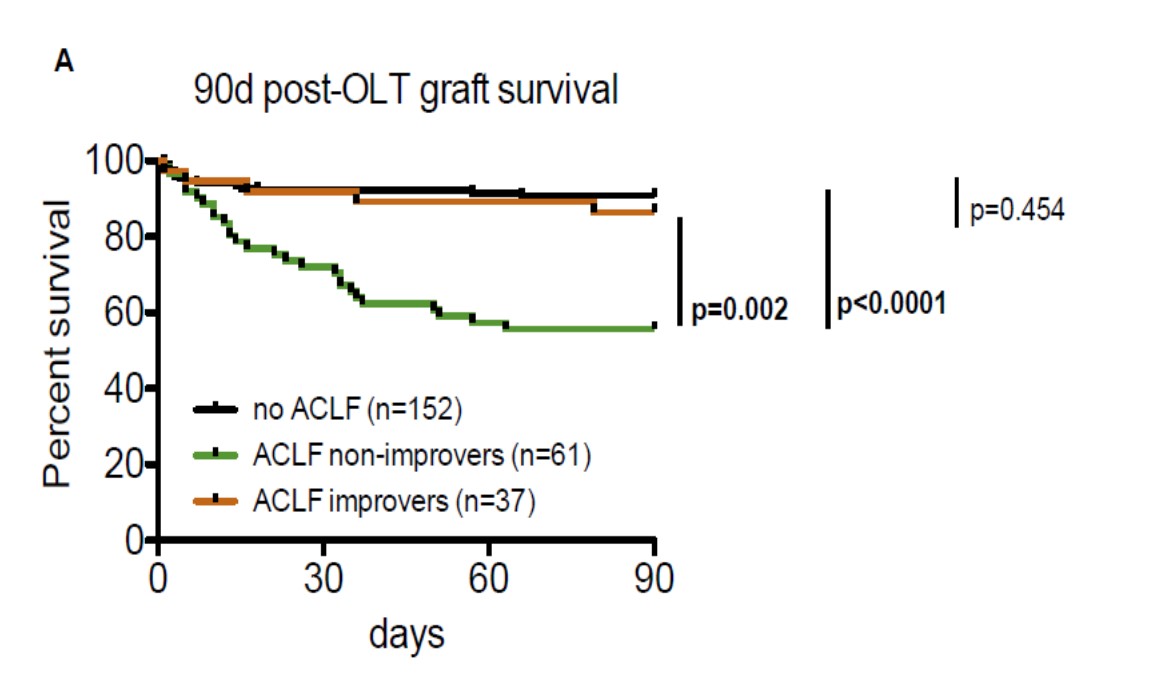Predictors for Post Transplant Survival in Patients with Acute-on-Chronic Liver Failure
Martina Sterneck1, Peter Huebener1, Katrin Bangert2, Andreas Drolz2, Stefan Kluge2, Ansgar Lohse1, Lutz Fischer3, Valentin Fuhrmann2.
1Department of Internal Medicine, University Medical Center Hamburg, Hamburg, Germany; 2Department of Intensive Care Medicine, University Medical Center Hamburg-Eppendorf, Hamburg, Germany; 3Department of Hepatobiliary Surgery and Transplantation, University Medical Center Hamburg-Eppendorf, Hamburg, Germany
Background: Acute-on-chronic liver failure (ACLF) is a severe complication of liver cirrhosis associated with excess short-term mortality rates. Orthotopic liver transplantation (OLT) is a potentially life-saving therapeutic modality for ACLF patients, but selection of transplant candidates with an acceptable post-OLT outcome is difficult. Objective: The aim of this study was to assess the risk of OLT in patients with ACLF, and to determine parameters that predict post-OLT survival in this patient cohort.
Methods: We retrospectively analyzed all patients with liver cirrhosis who underwent their first liver transplantation at the University Hospital Hamburg Eppendorf between 2009 and 2014 and assessed risk factors for post-transplant outcomes. Results: Of 250 cirrhotic liver transplant recipients, 98 patients fulfilled the diagnostic criteria for ACLF in the 3-month pre-transplant period. Compared to non-ACLF patients, ACLF was associated with significantly higher short-term morbidity and mortality after OLT (90-day patient survival: non-ACLF 96.1% versus ACLF patients 72.4%, p<0.0001). Clinical improvement in the pre-transplant period, as defined by recovery of at least one previously failed organ system, was observed in 37 of 98 (40%) ACLF patients, mostly within several days after diagnosis. In the multivariate analysis clinical improvement prior to OLT was the strongest predictor for post-transplant survival. In patients improving prior to transplantation post-transplant outcome was similar to non-ACLF OLT recipients. Following the 90-day post-transplant period, patient survival and long-term graft functions were comparable between ACLF and non-ACLF OLT recipients for up to five years.
Conclusion: Given the dismal prognosis of ACLF, our results indicate that ACLF patients can be transplanted with comparably good outcomes, in particular patients who improve under conservative therapeutic measures.

